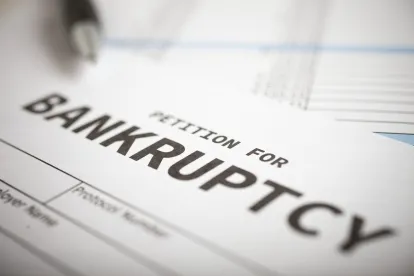If you are a licensee under a trademark license, what happens to your license if the licensor winds up in the Bankruptcy Court? A recent United States Circuit Court case demonstrates how uncertain the answer is at this time.
Some bankruptcy basics
One of the key rights provided to a debtor that has filed a bankruptcy proceeding is the right to “assume” or “reject” contracts under Section 365 of the Bankruptcy Code. This means that the debtor can elect to either “assume” the contract and continue to perform under it, or to “reject” the contract, and stop performing. Generally speaking, this decision is left to the debtor’s business judgment. If a debtor has entered into a contract that contains terms favorable to it, it may well seek to “assume” the contract. Conversely, if the debtor concludes that the contract’s terms are not favorable, it may seek to “reject” it.
But the right to assume or reject is not unlimited. First, to be assumed or rejected the contract must be “executory”. Generally speaking, most courts take the view that to be “executory” a contract must have remaining obligations that are unperformed by both parties to the contract. Thus, if the debtor has fully performed under the contract, but the counter-party has not, the contract would likely be “non-executory”, meaning that it can’t be assumed or rejected by the debtor at all. This distinction matters – some cases regarding the fate of trademark licenses never reached the issues discussed in this article, because the underlying agreement was found in the first place to be non-executory. If a contract is assumed, the parties continue to perform under it. As noted above, if a contract is rejected, the debtor no longer has an obligation to perform under the contract, and the Bankruptcy Code treats the rejection as a “breach” of the contract by the debtor. Any claim of non-debtor party for damages arising from that breach is treated under the Bankruptcy Code as a pre-petition unsecured claim.
Trademark licenses in bankruptcy
Particular provisions of the Bankruptcy Code create special treatment for certain kinds of rejected contracts. One of those provisions is Section 365(n), which creates rights for a non-debtor party to certain types of executory contracts that relate to “intellectual property”. Generally, speaking, Section 365(n) provides that if a debtor seeks to reject an executory contract in which the “debtor is a licensor of a right to intellectual property” the non-debtor can elect to treat the license as terminated and assert a general unsecured claim for damages, or, notwithstanding rejection, retain its rights under the license (with some limits). If the non-debtor makes the election to retain its rights, it is required to keep making payments and to otherwise generally perform under the license. The basic premise of Section 365(n) was to prevent a debtor/licensor from unilaterally cutting off the rights of an intellectual property licensee if the licensor rejected the license.
However, in enacting Section 365(n) Congress also created a definition of the term “intellectual property” used in that section – and conspicuously absent from that definition is any reference to a trademark, a service mark, or a trade name. Thus, case law decisions hold that a non-debtor party to a trademark license is not entitled to make the election described in Section 365(n). This, in turn, has raised an additional question for the courts – if Section 365(n) does not give the non-debtor trademark licensee the right to elect to retain its rights under the license, what happens to the rights of the licensee if the debtor/licensor rejects the license? Do those rights just terminate?
An answer isn’t as straightforward as it might seem. As noted above, under the general principles of Section 365, rejection of a contract is treated as a “breach” of the contract, and terminates the obligation of the debtor to perform. However, Section 365 simply doesn’t say that a rejected contract is “terminated”, and as a general matter of non-bankruptcy law, the fact that one party may breach a contract doesn’t simply mean that the contract terminates. So, how can rejection of a trademark license also mean the license itself has been “terminated”? And if the license isn’t “terminated” as a result of rejection, doesn’t the licensee still have the right to use it – even though it’s been rejected?
What happens to a rejected trademark license agreement?
Many bankruptcy cases over the years have reiterated the fairly basic bankruptcy principle outlined above – that rejection of a contract constitutes a breach of the contract by the debtor, but that it does not terminate the contract. Nonetheless, prior to the enactment of Section 365(n), in a 1985 decision, Lubrizol Enterprises v. Richmond Metal Finishers, Inc. 756 F. 2d 1043 (4th Cir. 1985) the Fourth Circuit Court of Appeals held that rejection of an intellectual property license terminated any continued right of the licensee to use the licensed intellectual property. A few years later, Congress added Section 365(n) to the Code in direct response to the Lubrizol decision, to protect licensees of “intellectual property”. But, as noted above, its definition of “intellectual property” did not include trademarks. So, if a bankrupt trademark licensor rejects a trademark license does the licensee lose its rights under the license entirely? The answer, at least right now, depends upon how you read the entirety of Section 365 of the Bankruptcy Code, and upon the Circuit in which the Bankruptcy Court deciding the issue sits.
In Lubrizol, the Fourth Circuit clearly concluded that the licensee’s rights terminate when the licensor rejects the contract. In the years after it was decided, Lubrizol was often criticized for its conclusion that contract rejection effectuated a termination of the trademark licensee’s rights, and its failure to distinguish between breach and termination of the rejected contract. In 2010, a concurring opinion in a Third Circuit decision, In re Exide Technologies, 607 F 3d 957 (3rd Cir. 2010), questioned the result in Lubrizol. In 2012, the Seventh Circuit took the Lubrizol analysis further to task in Sunbeam Products, Inc. v. Chicago American Manufacturing 686 F. 3d 372 (7th Cir. 2012). Noting that “no other court of appeals has agreed with Lubrizol – or for that matter disagreed with it”, the court, making reference to the Exide concurring opinion, concluded that rejection of a trademark license did only what Section 365 said it did – it constituted a breach by the licensor, but that “in bankruptcy, as outside of it, the other party’s rights remain in place” and that “nothing about this process implies than rights of the other contracting party have been vaporized”. Id. at 376-377. This decision, which seemed consistent with traditional notions of contract rejection under Section 365, set the Seventh Circuit directly at odds with the Fourth. Although there were subsequently some initiatives in Congress to fix the definition of “intellectual property” to plug the hole and address this issue, those initiatives ultimately went nowhere.
Early this year another circuit weighed into the issue when the First Circuit ruled in In re Tempnology, LLC No. 16-9016 (1st Cir. January 12, 2018). In a 2-1 decision, and over a dissent adopting the positions of the Seventh Circuit, the court came to the same conclusion as the Lubrizol court, and rejected the Seventh Circuit’s decision in Sunbeam, concluding that a trademark licensee had no right to continue to use trademarks after the license was rejected. In reaching its conclusion, the First Circuit questioned what it called the “unstated premise” of the Sunbeam decision that “it is possible to free a debtor from any continuing performance obligations under a trademark license, even while preserving the licensee’s right to use the trademark”. In the First Circuit’s view, “effective licensing” of a trademark required the owner to “monitor and exercise control over the quality of the goods sold to the public under cover of the trademark” at the risk of otherwise creating a “naked license”. Thus if the licensee had the right to continue to use the license, as the Sunbeam court concluded, it would force the debtor to “choose between performing executory obligations arising from the continuance of the license or risking the permanent loss of its trademarks” – something the First Circuit described as a “residual enforcement burden” that favored a “categorical approach of leaving trademark licenses unprotected from court-approved rejection”. The court concluded that any other result was inconsistent with the idea that rejection ended the debtor’s obligation to perform under the contract, and that its solution constituted an appropriate sharing of the burdens of rejection. As the court observed: “the counterparty may still make and sell its products – or any products – just so long as it avoids use of the trademark precisely when the message conveyed by the trademark may no longer be accurate.”
Thus a classic “circuit split” has grown wider with respect to this issue. In the First and Fourth Circuits, (Maine, New Hampshire, Massachusetts, Rhode Island, Maryland, West Virginia, Virginia, North Carolina, and South Carolina), the Lubrizol/Tempnology result controls. In the Seventh Circuit (Wisconsin, Illinois, and Indiana) the Sunbeam result controls. In the Third Circuit (Pennsylvania, New Jersey, and Delaware) the concurring opinion in Exide suggests that the Sunbeam result might control. However, some uncertainty remains, as prior to Exide, some Delaware bankruptcy courts had adopted the Lubrizol approach, while other bankruptcy courts in the circuit subsequently adopted the Sunbeam approach. Compare In re HQ Global Holdings, Inc. 290 B.R. 507 (Bankr. D. Del. 2003) and In re Crumbs Bake Shop, Inc., 522 B.R. 766 (Bankr. D. N.J. 2014). Resolution by the United States Supreme Court will likely be needed to resolve the issue. Until that time, both licensors and licensees not clearly covered by the definition of “intellectual property” in the Bankruptcy Code will face uncertainty over their fate of their license in the event of bankruptcy.





 />i
/>i
